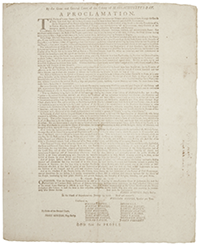Over the past 60 years I’ve been acquiring material related to Ulster County, New York and over the decades have found increasing opportunities to acquire early source documentation. Such discoveries are beyond random and tend to come up as boxes of unsorted records, sometimes as few as 30 items and in other cases tens of boxes and thousands of examples. They represent concentration and tend to be highly specific and illuminate day to day realities that were often more difficult than printed accounts of local history suggest. Life has always been complicated and how individuals and organizations acted and adjusted gets into the muscle and sinew of history. That such accumulations are available tends to beggar even the most optimistic imagination. That Ulster County, a tiny fraction of a tiny slice of the book, manuscript, map and ephemera market can be found in the electronic weeds, is testament to today’s one-world embracing search technologies. For collectors and collecting institutions possibilities for concentration create opportunities to better understand the past. What matters are your conceptual approach, financial resources, internet connections and research services you use.
Some years ago I was offered the records of a Hudson River ferry business that ran between the years 1869 to 1894. Initially the company made a regular run from Peekskill to New York City but subsequently found competition too strong. In time they switched their service to regularly run from Peekskill to Poughkeepsie, Milton, Marlborough, and Newburgh. In time that strategy too encountered a new factor when the Poughkeepsie Railroad Bridge crossing the Hudson River opened in 1888, offering cargo and passenger options, that ran year round while boat service closed because of ice for 3 to 4 months most years. What was shipped and delivered tells a fascinating story.
As well, twice during the past decade I’ve bought business records of the Lake Mohonk Hotel located, near New Paltz. Altogether, I’ve acquired thousands of files relating to the array of services the founding Smiley family have organized and offered over their 150 years of stewardship of their patch of God’s handiwork on the Shawangunk ridge. Of what could have simply been a marvelous hotel they created a business imbued with high moral purpose. That story emerges in their day to day records. While I probably own many if not most of the books written about Mohonk, these underlying documents tell a better and more complex story.
As well, I have bought a significant portion of the early records of New Paltz’s oldest financial institution, the Huguenot Bank. Their shareholder records and Board of Directors’ meeting notes show how they managed through success and failure. In the later years covered in those records, there are references to people I knew growing up in New Paltz in the 1950’s and 1960’s and never understood their roles in the community.
As well I acquired a portion of the records of the New Paltz Fire Department, ca 1880 – 1907, quite by chance when eBay was still a useful marketplace. An inexperienced seller both under described and under-estimated the significance of fire department’s daily journal and sold it for about $200. This journal includes the fire department’s notes about the burning of the Normal School in 1906.
As well, I’ve acquired what appears to be most of the business records of a hardware store in Saugerties in northern Ulster County covering the period 1865 to 1940. In the later 19th century this business found ways to develop supplier relationships primarily based on their access to the boats running on the Hudson River down to New York City and north to Albany and Troy. In time their vendor list expanded as transportation options increased. Into the mid-1930’s they appear to have maintained relationships with as many as 400 suppliers. As well, I have their day books accounting for roughly 25,000 days of transactions accounting for more than a million purchases. The details are tedious but interesting. In some cases there appear to be highly detailed orders relating to the building of specific buildings. The historically minded, me thinks, would enjoy to have access to their building’s deep historical details expressed in the builder’s and architect’s orders placed with their hardware store.
As well I have acquired 45 Ulster County documents from a single source, dated between 1699 into the early 19th century including an appealing contemporary note related to the burning of Kingston by the British in 1777. Such documents come up in fits and starts at one or another of the many local auctions. There is no saying what and when. You watch over a decade and they appear.
Such documents and archives hang around un and under-appreciated. Given their scale and complexity few think of them as local history’s primary documentation. I do.
As well, I must mention the local paintings. While the archives, diaries, directories and documentation is extraordinary local paintings are entirely a different beast.
Ulster County is the subject of many works by important painters. Shelves of documents only carry collecting enthusiasm so far. When the occasional painting illuminates a local subject, as I have for Lake Mohonk, 3 paintings capture the feeling these places engender. Two are painted by Daniel Huntington and the other is by Worthington Whittredge. And for the well documented scenes that were never painted before, there is Len Tantillo who has been painting Ulster County Reimagined and recently published a book of his life’s work.
There is a deep interest in how the world that was has become the world we live in today. As we understand how life has evolved I have no doubt we’ll also see the future.
Here is a link to Mr.Tantillo's book at Amazon if you would like to buy a copy. As well, he and his work are the subject of an exhibition at The Albany Institute of History & Art [January 27 - July, 25, 2021]. For details it is called A Sense of Time.



![<b>Heritage, Dec. 15:</b> John Donne. <i>Poems, By J. D. With Elegies on the Author's Death.</i> London: M[iles]. F[lesher]. for John Marriot, 1633. <b>Heritage, Dec. 15:</b> John Donne. <i>Poems, By J. D. With Elegies on the Author's Death.</i> London: M[iles]. F[lesher]. for John Marriot, 1633.](https://ae-files.s3.amazonaws.com/AdvertisementPhotos/8caddaea-4c1f-47a7-9455-62f53af36e3f.jpg)


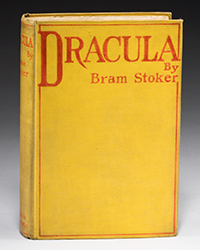
















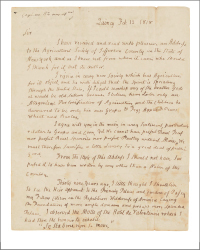

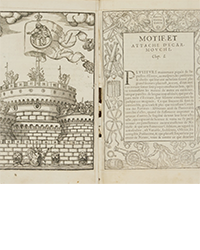
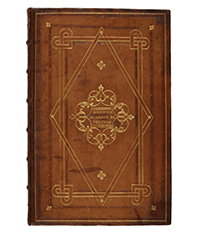
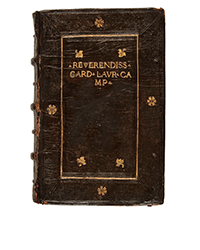
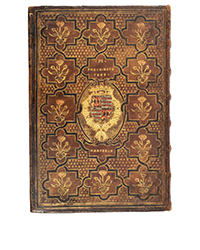

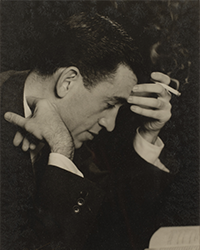
![<b>Sotheby’s, Dec. 16:</b> [Austen, Jane]. A handsome first edition of <i>Sense and Sensibility,</i> the author's first novel. $60,000 to $80,000. <b>Sotheby’s, Dec. 16:</b> [Austen, Jane]. A handsome first edition of <i>Sense and Sensibility,</i> the author's first novel. $60,000 to $80,000.](https://ae-files.s3.amazonaws.com/AdvertisementPhotos/9a74d9ff-42dd-46a1-8bb2-b636c4cec796.png)
